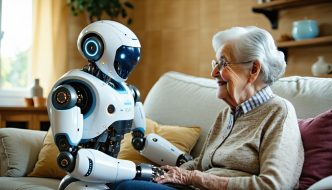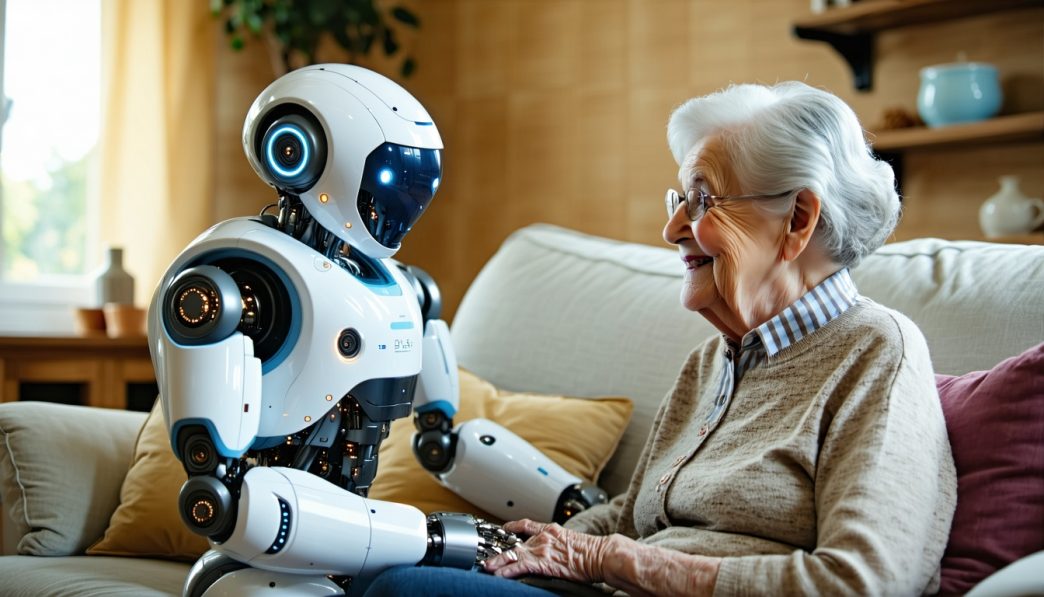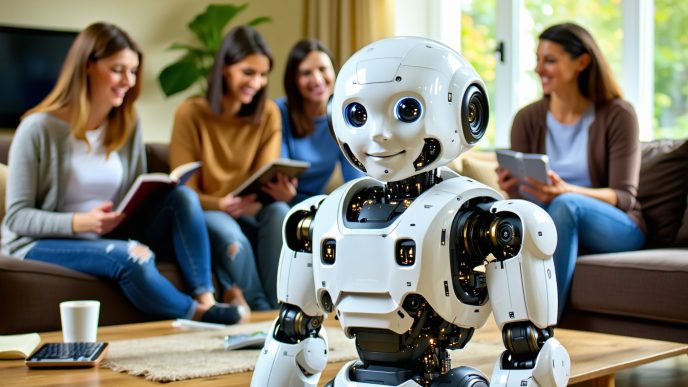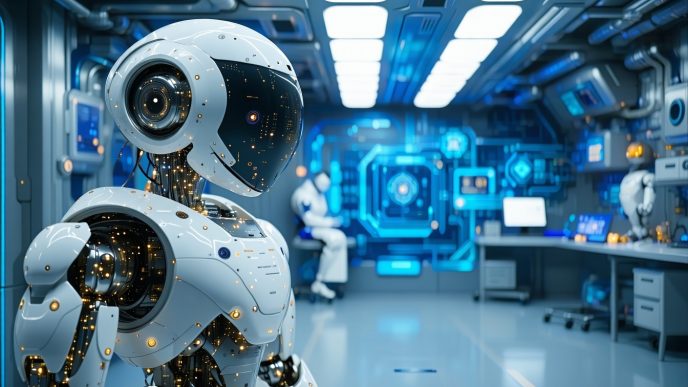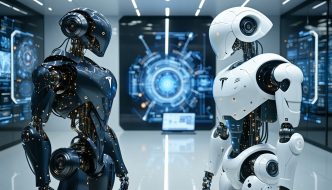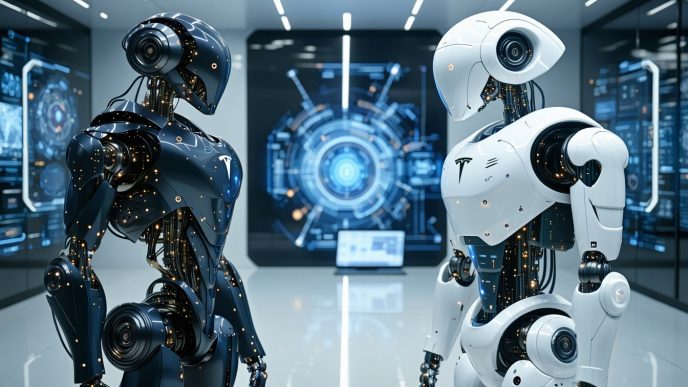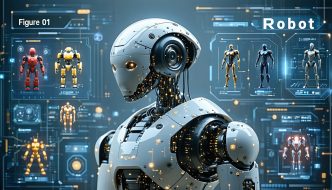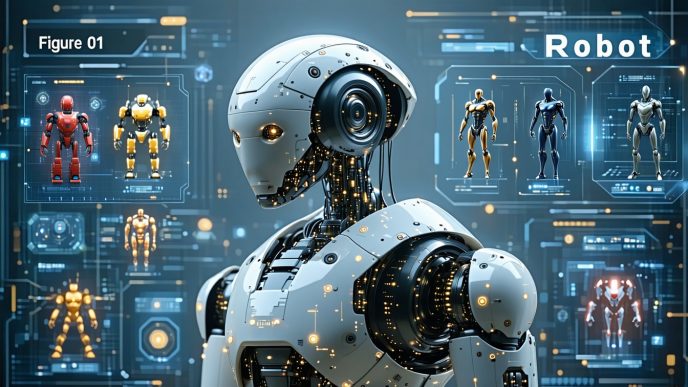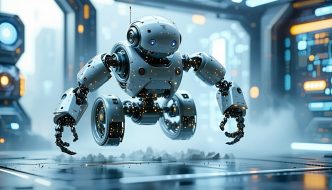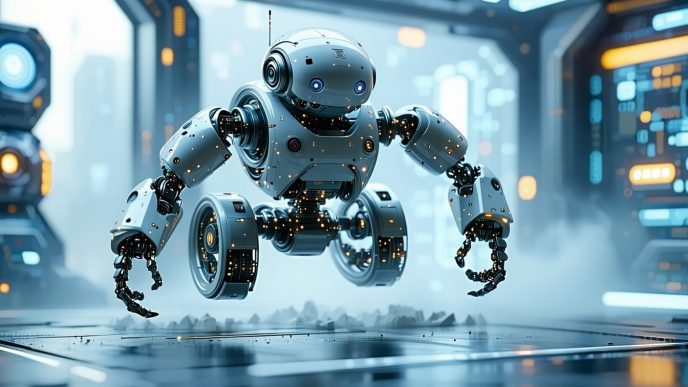Introduction to Humanoid Robots in Elder Care
The Increasing Role of Technology in Elder Care
Technology has become a vital aspect of modern elder care, enhancing the quality of life for older adults. With the growing demand for effective care solutions, humanoid robots have emerged as innovative tools to assist caregivers and improve elder care services. These robots provide a range of functionalities designed to address the unique challenges faced by elderly individuals, such as mobility issues and social isolation.
As the population ages, the integration of technologies like humanoid robots in elder care is expected to increase. According to recent studies, approximately 23% of the U.S. population will be over the age of 65 by 2030. This demographic shift necessitates solutions that can help manage caregiving demands.
| Year | Elderly Population Percentage |
|---|---|
| 2020 | 16% |
| 2025 | 20% |
| 2030 | 23% |
Potential Benefits of Humanoid Robots
Humanoid robots offer various advantages that can greatly enhance the quality of care provided to the elderly. Some of the key benefits include:
-
Increased Independence: Humanoid robots can assist elderly individuals with daily tasks, allowing them to maintain their autonomy while ensuring safety and support.
-
Personalized Care: With advancements in artificial intelligence, these robots can adapt to individual preferences, creating a more tailored care experience.
-
Enhanced Safety: Equipped with safety features such as fall detection and emergency response systems, humanoid robots can provide immediate assistance during critical situations.
-
Companionship: Many humanoid robots are designed to interact socially, reducing feelings of loneliness and depression among seniors. For more insights into companionship, explore our article on humanoid robots for companionship.
-
Healthcare Support: These robots can monitor health parameters, reminding users to take medications and helping to manage chronic conditions. For more details, refer to our section on humanoid robots in healthcare.
By integrating humanoid robots into elder care settings, caregivers can alleviate some burdens while enriching the lives of seniors. The potential for improved quality of life positions these robots as essential components in the future of elder care.
Humanoid Robots Supporting Daily Activities
Humanoid robots play a significant role in assisting elderly individuals with daily activities. From mobility support to medication management and health monitoring, these robots can enhance the quality of life for seniors.
Assistance with Mobility
Humanoid robots can assist with mobility by providing physical support to individuals with limited movement. These robots are designed to help users stand, walk, and even navigate their surroundings.
| Feature | Description |
|---|---|
| Weight Support | Robots can provide balance and support while walking. |
| Navigation Assistance | Some robots can map out the environment and guide users safely. |
| User Interface | Many feature voice-activated controls for ease of use. |
For more on how these robots operate, see our article on humanoid robot locomotion systems.
Aid in Medication Management
Managing medications can be challenging for elderly individuals. Humanoid robots can help by reminding users when to take their medications and even dispensing them at the right times.
| Medication Management Features | Description |
|---|---|
| Reminder Alerts | Robots can provide audible or visual reminders for medication times. |
| Pill Dispensing | Some models can dispense the correct dosage at the designated time. |
| Tracking Compliance | Robots can monitor and report if medications are taken as scheduled. |
To learn more about how technology aids in healthcare, explore our section on humanoid robots in healthcare.
Monitoring Health Parameters
Health monitoring is critical for elderly care. Humanoid robots can track various health parameters, including heart rate, blood pressure, and other vital signs.
| Health Monitoring Features | Description |
|---|---|
| Vital Signs Tracking | Continuous monitoring of critical health metrics. |
| Data Reporting | Robots can share data with caregivers or medical providers. |
| Alerts for Abnormal Readings | Immediate alerts for any concerning health metrics. |
For insight into the emotional aspect of robot interactions, read our article on humanoid robots for companionship.
Humanoid robots bring a wealth of resources to assist with daily activities, ensuring seniors receive the necessary support and care in their everyday lives.
Emotional Support and Companionship
Humanoid robots have the potential to provide significant emotional support and companionship for the elderly. This aspect of care is crucial as social interactions play a key role in maintaining mental health and well-being.
Alleviating Loneliness
Many elderly individuals experience feelings of loneliness and isolation, especially if they live alone or away from family. Humanoid robots can serve as companions, offering a sense of presence and engagement. These robots can interact through conversation, games, and shared activities, helping to fill the social void that many may feel. By fostering a connection, these robots can significantly enhance the quality of life for elderly individuals.
| Benefit | Impact |
|---|---|
| Companionship | Reduces feelings of loneliness. |
| Interaction | Encourages engagement through conversation and activities. |
Providing Mental Stimulation
Humanoid robots can engage the elderly in mentally stimulating activities, such as puzzles, quizzes, or learning new skills. By providing challenging yet enjoyable tasks, robots can help keep the mind active. This stimulation is important in delaying cognitive decline associated with aging. Programs can be tailored to individual preferences, which enhances effectiveness.
| Activity Type | Example |
|---|---|
| Cognitive Games | Memory quizzes, puzzles. |
| Educational Content | Language learning, trivia. |
Social Interaction
Social interactions are vital for emotional health. Humanoid robots can facilitate social moments by encouraging storytelling, sharing memories, or even connecting individuals with family through video calls. They can also help make new friendships by facilitating group activities, which can be a great way for elderly individuals to connect with peers. The interaction with robots can reduce social anxiety, providing a comfortable environment for communication.
| Interaction Type | Description |
|---|---|
| Storytelling | Encouraging reminiscence and sharing experiences. |
| Group Activities | Organizing games or discussions with peers. |
The role of humanoid robots in elder care extends beyond mere assistance with physical tasks. Their capacity to provide emotional support and companionship can play a pivotal role in enhancing the lives of elderly individuals. The integration of these robotic companions can complement existing care strategies, providing both practical help and significant emotional benefits. For more on the functions of humanoid robots in elder care, visit our article on humanoid robots for companionship.
Safety and Security Features
Humanoid robots designed for elder care come equipped with various safety and security features that enhance their effectiveness in providing support to seniors. These features address critical aspects of health and security in everyday living.
Fall Detection and Prevention
Falls are a significant risk for elderly individuals. Humanoid robots can incorporate advanced sensors and algorithms to monitor movements and detect falls in real time. By analyzing patterns in the user’s movements, these robots can alert caregivers or emergency services if a fall occurs.
| Feature | Description |
|---|---|
| Sensor Type | Accelerometers, gyroscopes |
| Response Time | Typically under 5 seconds |
| Alert Mechanism | Notifications to caregivers or emergency contacts |
Through ongoing monitoring, humanoid robots can also help prevent falls by providing assistance during mobility. This includes offering physical support or reminding seniors to use assistive devices like walkers.
Emergency Response Systems
In the event of an emergency, humanoid robots can act swiftly to provide assistance. These robots can be programmed to recognize situations that require immediate attention, such as health emergencies or home intrusions.
| Response Feature | Details |
|---|---|
| Emergency Detection | Monitors vital signs and environmental changes |
| Communication | Direct communication with emergency services |
| Evacuation Support | Guides individuals to safety in crisis situations |
By integrating emergency response systems, robots ensure that elderly individuals have access to help at any time, contributing to a sense of security within the home.
Home Security Monitoring
Humanoid robots can also serve as security monitors for homes, using built-in cameras and sensors to track activity within the premises. They can alert homeowners of suspicious activity or even deter potential intruders.
| Security Feature | Description |
|---|---|
| Surveillance | Real-time video monitoring |
| Alerts | Notifications sent to smartphones or security services |
| Integration | Works with existing home security systems |
By maintaining oversight of the home environment, humanoid robots contribute to overall safety and peace of mind for elder residents.
The integration of these safety and security features in humanoid robots enhances their capability to support elderly individuals, ensuring they benefit from both assistance and protection in their daily lives. For more insights into how humanoid robots can assist with daily activities, check our section on humanoid robots for home use.
Ethical Considerations
The integration of humanoid robots in elder care raises several ethical questions. While these robots can enhance care and support, it is important to address privacy concerns, autonomy, and the implications of having robots in roles traditionally filled by humans.
Privacy Concerns
One of the primary ethical issues surrounding humanoid robots in elder care is the privacy of individuals. As robots often involve monitoring and data collection for health and safety purposes, there is a potential risk for breaches of personal information.
When robots are equipped with sensors and cameras, they may capture data about the individual’s daily activities and health status. It is crucial to implement stringent data protection measures to ensure that personal information is kept confidential. The importance of addressing humanoid robots and privacy cannot be overstated, as safeguarding sensitive data is essential for maintaining trust.
| Privacy Concerns | Description |
|---|---|
| Data Collection | Robots may monitor daily activities and health metrics. |
| Data Security | Protecting personal information from cyber threats is vital. |
| Informed Consent | Users should be aware of what data is collected and how it is used. |
Autonomy and Independence
Another ethical consideration is the impact of humanoid robots on the autonomy and independence of elderly individuals. While these robots can aid in daily activities, there is a fine line between assistance and dependency.
It is essential that the use of humanoid robots promotes independence rather than diminishes it. Robots should complement human capabilities while ensuring that elderly users maintain control over their lives. By designing humanoid robots that encourage independence, the overall aim of elder care can be better fulfilled. Information on the balance between assistance and autonomy can be found in our discussion on humanoid robots for companionship.
| Autonomy Considerations | Description |
|---|---|
| Empowerment | Robots should support independence and decision-making. |
| Choice | Users should have options regarding robot usage. |
| Support vs. Control | Balance between assistance and over-dependence is crucial. |
Human vs. Robot Caregivers
The presence of humanoid robots in elder care also raises questions about the relationship between human caregivers and robots. While robots can handle specific tasks, they may lack the emotional depth and understanding that human caregivers provide.
It is important to recognize that while robots can assist in physical care, they may not adequately fill the emotional and psychological needs of elderly individuals. Human interactions are often vital for emotional support, and the unique qualities of human caregivers should not be overlooked. For further insights into these differences, the article on robot emotions and ethics provides an in-depth examination.
| Human vs. Robot Caregivers | Considerations |
|---|---|
| Emotional Connection | Humans offer empathy and emotional support. |
| Task Efficiency | Robots can perform repetitive and physical tasks effectively. |
| Balance in Care | Blending human support with robotic assistance can enhance care. |
Addressing these ethical considerations is vital in the development and integration of humanoid robots in elder care to ensure that they are used responsibly and effectively.
Limitations of Humanoid Robots in Elder Care
While humanoid robots have the potential to significantly enhance elderly care, there are several limitations that must be considered. These constraints span technological capabilities, emotional understanding, and practical maintenance requirements.
Technology Constraints
Humanoid robots in elder care face several technological hurdles that impact their functionality. Key challenges include:
| Technology Constraint | Description |
|---|---|
| Limited Mobility | Many humanoid robots struggle with navigating complex environments, which can diminish their effectiveness in home care settings. |
| Battery Life | Extended usage can lead to limitations in robot operational time before necessitating a recharge. |
| Sensor Accuracy | Faulty sensors can result in errors in detecting falls or monitoring health parameters, compromising safety. |
Enhancements in technology such as humanoid robot navigation and humanoid robot sensors are crucial for improving these limitations.
Emotional Depth and Understanding
Another significant limitation of humanoid robots is their lack of emotional depth and understanding. While they may be programmed for basic interactions, many robots cannot truly comprehend human emotions or provide the empathy that elderly individuals may seek. Key aspects include:
| Emotional Limitation | Impact |
|---|---|
| Limited Emotional Recognition | Humanoid robots often struggle to accurately interpret or respond to emotional cues. |
| Absence of Genuine Companionship | Robots may not fulfill the emotional needs of seniors, highlighting the difference between human and robotic interaction. |
Addressing these concerns through advancements in emotion recognition in robots can enhance their ability to connect with users on a deeper level.
Maintenance and Cost Factors
The upkeep and financial implications associated with humanoid robots are also considerable. Maintenance can involve software updates, hardware repairs, and cleaning, leading to additional costs. Key points are as follows:
| Maintenance/Cost Factor | Considerations |
|---|---|
| High Initial Investment | Implementing humanoid robots can require significant upfront costs that may not be feasible for all care facilities. |
| Regular Upkeep Costs | Ongoing maintenance can accumulate over time, raising total operational expenses. |
For a deeper understanding of the financial aspects, refer to our article on humanoid robot costs.
By acknowledging these limitations, stakeholders can work towards solutions that enhance the utility of humanoid robots in providing effective elder care while balancing emotional and practical considerations.
Future Prospects and Development
Advances in Artificial Intelligence
Artificial intelligence (AI) plays a crucial role in enhancing the capabilities of humanoid robots in elder care. These advancements allow robots to learn from interactions, understand user preferences, and improve their assistance over time. AI-driven algorithms contribute to better decision-making processes, making humanoid robots more effective in their roles.
Recent developments in AI have focused on improving emotional recognition and responsiveness, enabling robots to engage in more meaningful interactions with elderly individuals. Such emotional intelligence enhances companionship, an essential aspect of elderly care. Information on these AI models can be explored further in our article on ai models in humanoid robots.
Personalization in Elder Care
Personalization is key to providing effective support and improving the quality of life for elderly individuals. Humanoid robots can be programmed to cater to individual preferences, routines, and health needs. By collecting data on an individual’s behavior and preferences, these robots can customize their assistance, providing a tailored experience.
A personalized approach may include adjusting communication styles, scheduling reminders for medication, and adapting activities that stimulate mental engagement. Understanding the importance of customization is crucial when considering the role of humanoid robots in elder care. For further insights on customization, refer to our article on humanoid robot customization.
Integration with Healthcare Systems
The successful implementation of humanoid robots in elder care necessitates seamless integration with existing healthcare systems. This integration allows for real-time health monitoring, efficient communication among care providers, and improved management of medical records.
Humanoid robots equipped with advanced sensors can track vital health parameters and share the data with healthcare professionals, enabling faster responses to changes in health status. Collaboration between humanoid robots and healthcare systems enhances not only care efficiency but also safety for elderly individuals. For examples of how robots can assist in healthcare, see our article on humanoid robots in healthcare.
| Aspect | Current Status | Future Development |
|---|---|---|
| AI Capabilities | Basic learning models | Advanced emotional recognition |
| Personalization | Limited customization | Tailored elder care experiences |
| Healthcare Integration | Standalone systems | Real-time data sharing and alerts |
The integration of humanoid robots into elder care is positioning them as essential tools for future caregiving, significantly improving the level of support and companionship available to elderly individuals.
